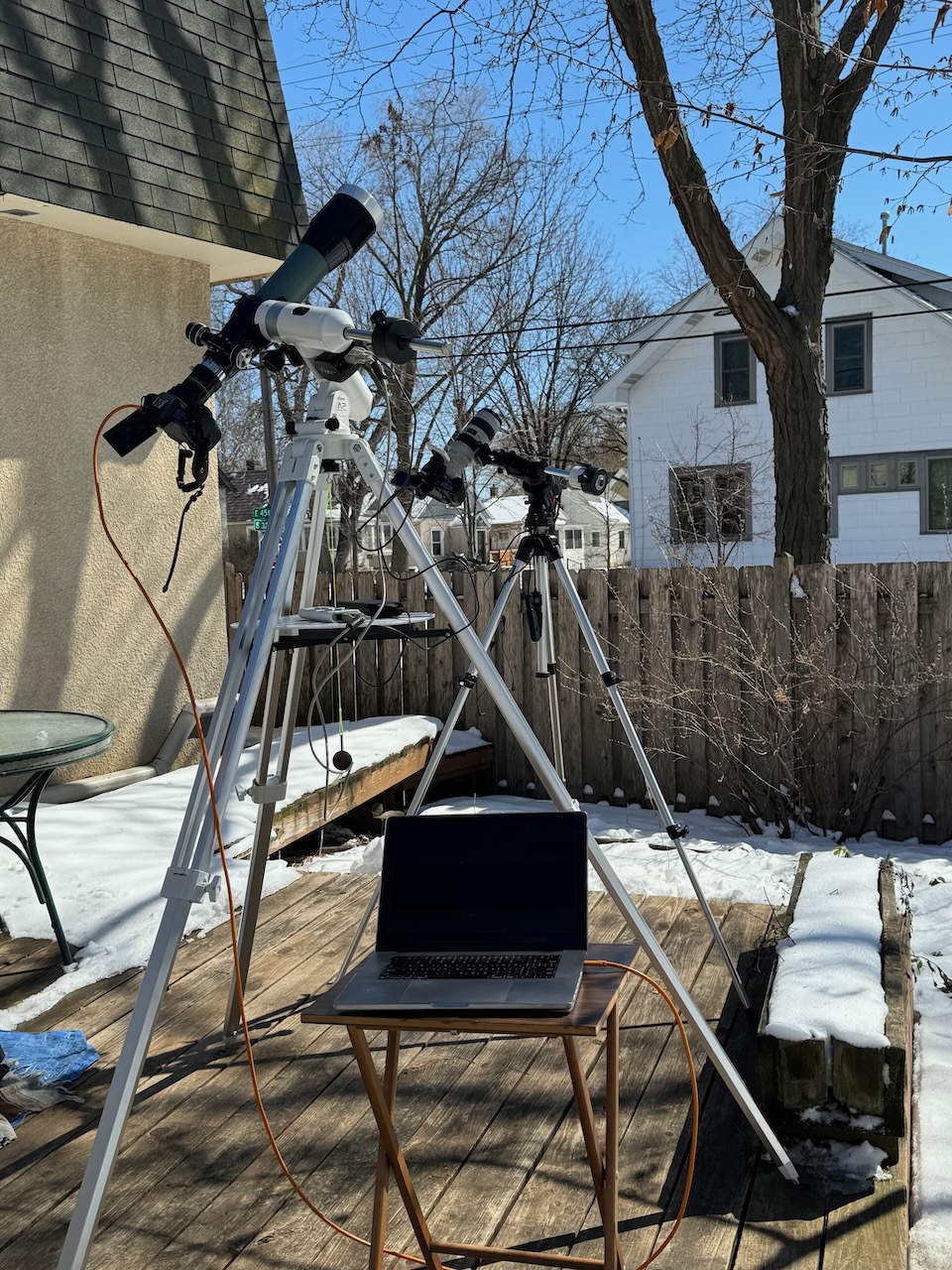
While Poldi was preparing food-for-the-masses, I was preparing other things. The big attraction the eclipse held for me was its rare opportunity to capture unique photos of the sun.
In 2017 I had participated in “The Modern Eddington Experiment“, trying to photograph the nearby stars to see if they were deflected by the sun’s gravity as Einstein predicted. My results were inconclusive, but I really enjoyed the challenge of getting the pictures and analyzing the results afterward.
This year I registered to contribute to the Eclipse Mega Movie, a less complex project but one that matched my desire to capture the corona, which as we near the peak of the solar cycle should be even larger than it was in 2017.
To do this, I needed to precisely control the camera during totality. As often occurs with our rapidly evolving technology, much has changed in the seven years since 2017. I had a new camera and a new computer, several hardware and software versions later than my previous eclipse session. The software application I had used before had become obsolete, no longer able to run on the new laptop and operating system. The author had not migrated it to the latest platform.
Fortunately, a new program had been created that could fill its role– it had fewer features but was entirely adequate for what I wanted to do. I was pleased to discover it.
Continue reading